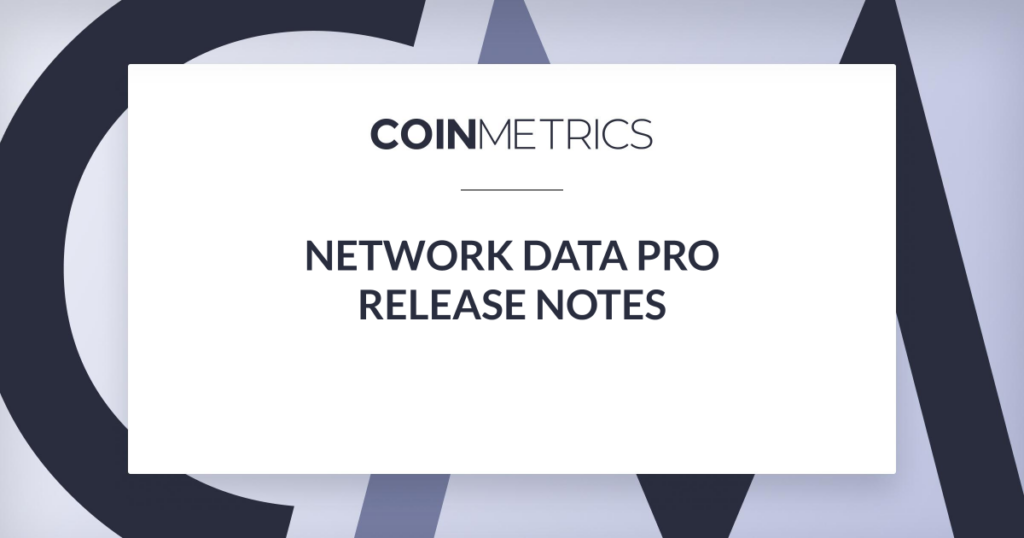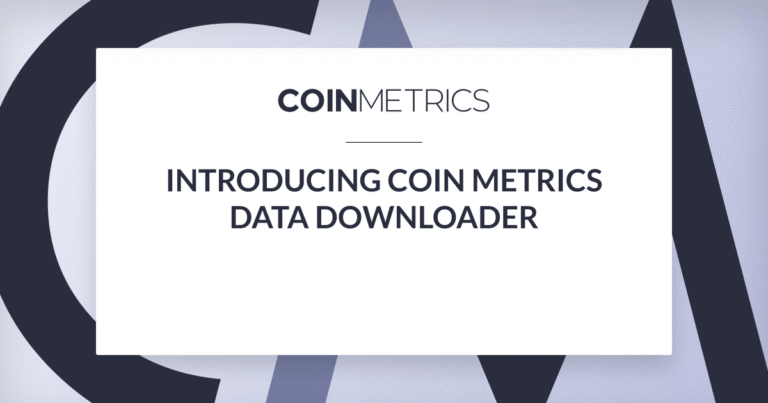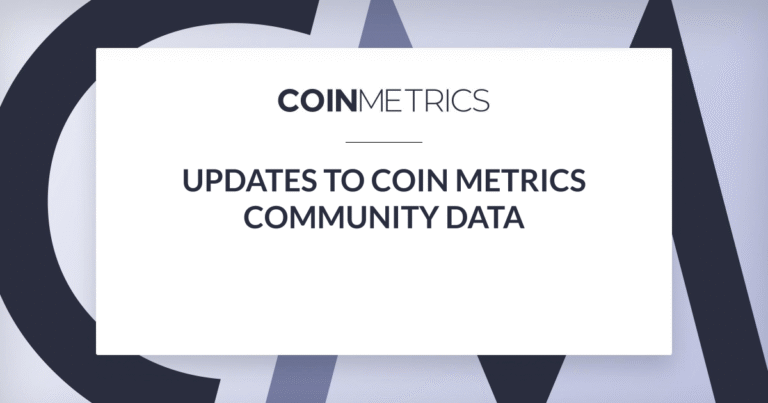Coin Metrics is pleased to announce the release of version 4.9 of our Network Data Pro (NDP) product.
In this release, we introduce 1 new network, Polkadot (DOT), and 4 new DeFi assets, namely, HuobiBTC (HBTC), SynthetixUSD (sUSD), ALPHA (ALPHA), and 1INCH (1INCH).
As many of you may know, Polkadot is an entirely new network that is still under constant development. It posed a fun challenge for our team to dissect and interpret DOT data from our nodes in a reliable fashion. While the node client seems to have stabilized, we ask you to bear in mind that drastic changes that result in service interruptions may occasionally take place given how edgy Polkadot currently is.
In this release we also expanded asset coverage for our Free Float Supply Metrics to include DOT, UNI, UMA, Aave, Yearn, Curve, REN, and BAL.
Lastly, included in this release are 62 novel metrics that fit under the following 3 categories:
1. Next-Generation Miner Flows for Bitcoin and Ethereum
As explored in last week’s State of The Network, it is crucial to understand the impact miners have on the market. After all, miners are frequently blamed for causing dips in the price of Bitcoin. We have found these accusations to be often unsubstantiated—worse still, they’re sometimes based on faulty metrics that conflate mining pool payouts with miner spending, which misleads users. With our new Miner Flows metrics, we hope to bring a more objective understanding of the relationship between miners and crypto exchanges, ultimately enabling our clients to determine when and where miners sell their coins.
2. New Hashrate Estimates by ASIC Types
In the past, we have published research on how block nonces can be used to determine when a specific ASIC mined a block. We have found that measuring when older ASIC are reintroduced to the network can yield powerful insights of miner behavior and profitability. With this release, we have made all of our estimates available to our clients. Also included are new mining revenue metrics, namely, Miner Revenue Per Hash Unit.
3. Supply Dispersion Metrics
As we have published in the past, the Supply Equality Ratio (SER) and the Network Distribution Factor (NDF) are ratios that can be used to quantify wealth inequality in cryptonetworks. The former is analogous to the 20:20 Ratio; a wealth inequality metric that compares the average income of the richest 20% of a society to the poorest 20%. Instead of income, the SER compares the poorest accounts (sum held by accounts with a balance less than 0.00001% of the supply) against the richest accounts (sum held by the top 1% addresses). The Network Distribution Factor (NDF), on the other hand, emcompases a broader economic group as it is calculated by dividing the sum held by the top 0.01% by the total supply. With this release, both SER and NDF are now available to our clients.
You can find more information on these additions in our Knowledge Base. As always, feel free to reach out if you have any questions. We hope you enjoy this release.



